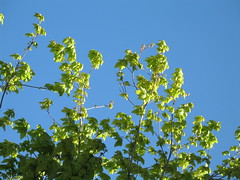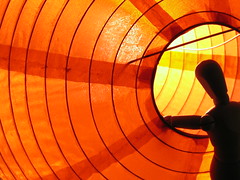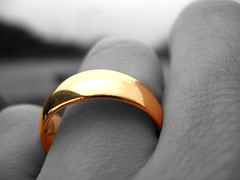So as I've clawed my way up the photography ladder, I've had a few thoughts along the way. A few years back, one of them was "
Why in the world should a camera cost $1,500 dollars?!" (and now I'm of the opinion that $8,000 for a camera isn't half bad. Oh how the times change)
Coming from the world where a 35mm Point and Shoot was $15, and a new digital camera might be $150, a digital SLR costing $1,500 seemed... Well, insane!
So what's different between a $150 digital camera and a $1,500 one? Do you even *need* $1,350 dollars worth of improved gadgetry? In fact, why not just shoot everything with a $25 dollar Holga (
a notoriously bad (yet desirable because of that) medium format film camera)
Another photographer posed this same question. He was at a photoshoot, and when he pulled out a Holga, the other photographers looked at him 'like he'd just killed a kitten'. He was curious as to why the disdain, and another photographer had a particularly good answer:
"
The idea behind "photoshoots" is control. The common idea of a "good" photographer, is having control over the majority of the elements affecting the image (even if it looks spontaneous). Therefore, pulling out a Holga at a photoshoot is like saying "whatever happens happens"....that's why I'd look at another photographer funny..."
-JGraham
What you're paying for in that extra $1,350 dollars is having control over all the elements in a photograph that are under the possible control of the camera. Needless to say, a $1,500 DSLR can do a lot of things a $150 P&S camera can't.
A specific example would be spot metering. Proper exposure is tough. Usually the digital camera takes its best guess as to what should be the brightest and darkest areas in a photo, and tries to make everything in the image visible. Some times, as a photographer, you don't care if the background is visible or not, you're concerned that every bit of the model is properly exposed and don't give a fig for the rest of the picture. With a DSLR, you can select a small spot (say the model's face) that should be properly exposed and to ignore the rest of the picture. This is useful when you have someone in front of a really bright window. Or a strobe. Or any number of strong back lights. Spot metering is a $500 option, it seems (if you count the number of dollars between cameras where it's available and those where it's not).
There's quite a few controls like that. While costly, they are very useful. Telling the camera how to focus is also another expensive option. Etc, etc, etc.
What it adds up to is 'yes, there's a good reason for a camera to cost $1,500, or $8,000, or even $38,000'. It all adds up to the photographer having more control over his images. Being able to get things exactly like need them to be is worth a lot of money, as it turns out.


















